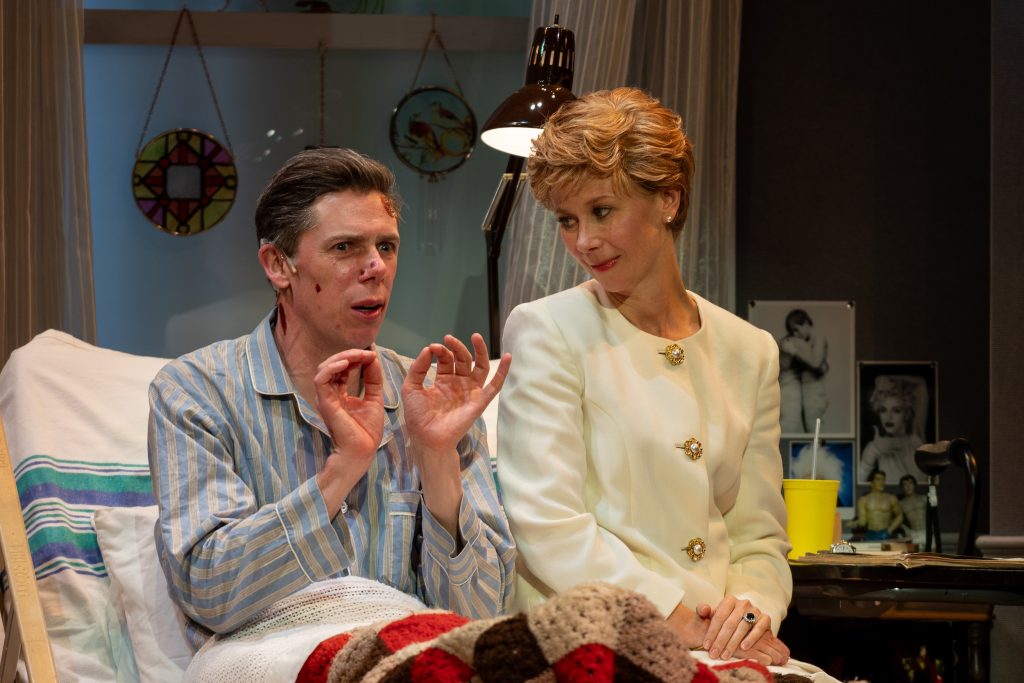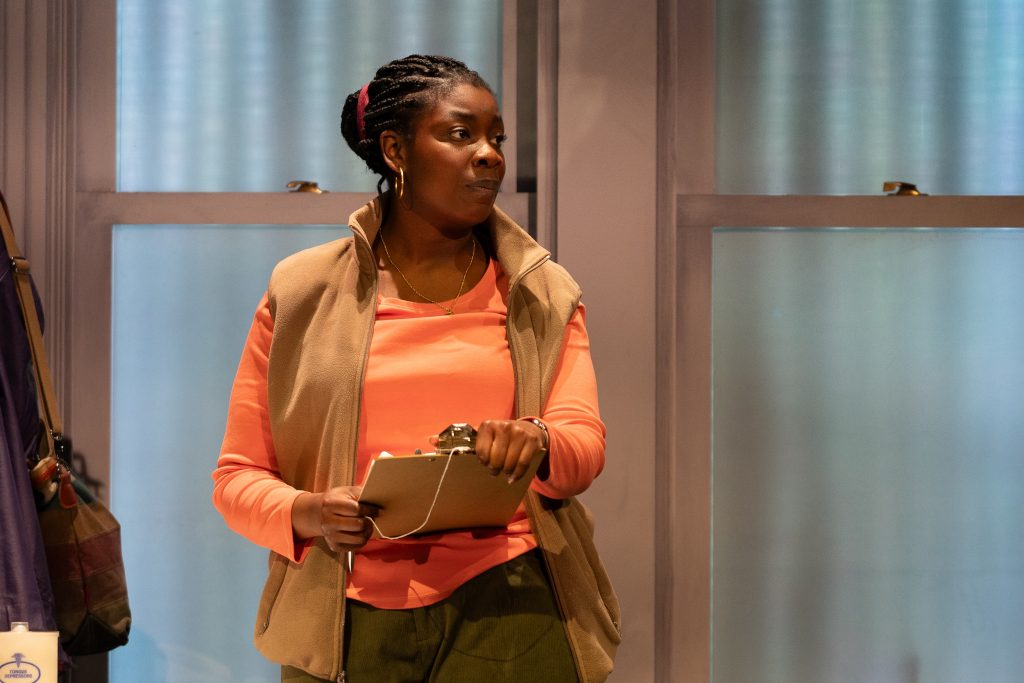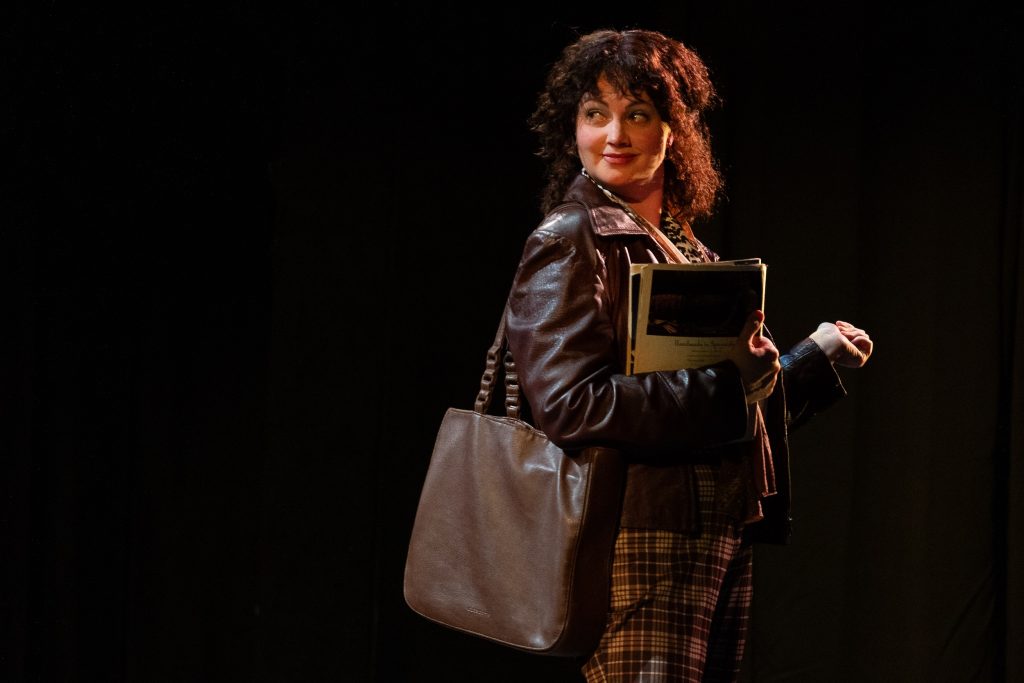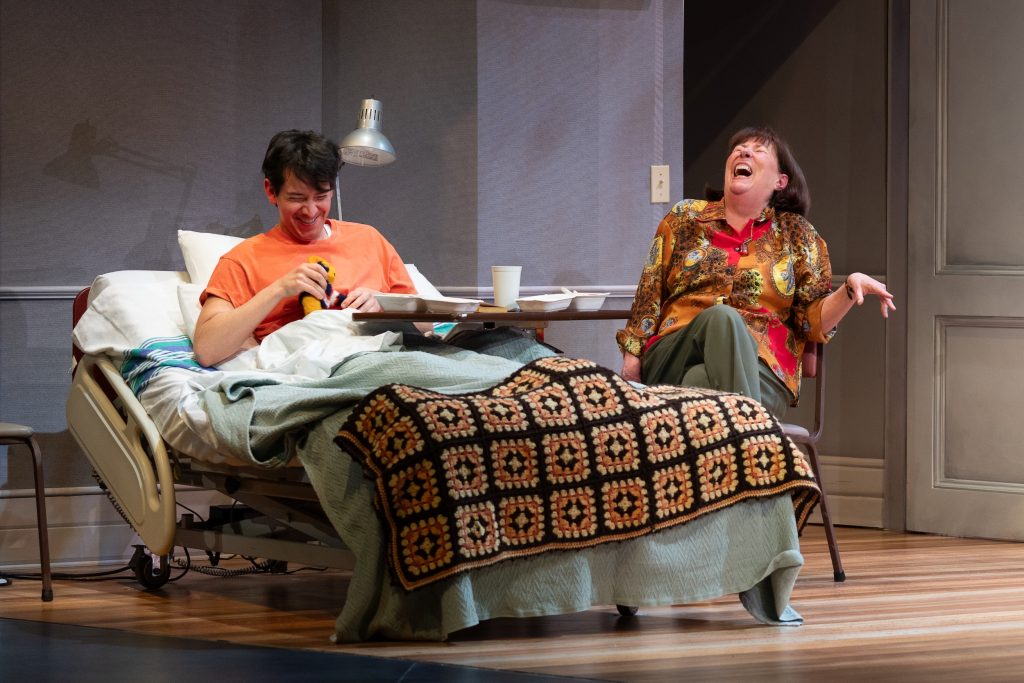
Credit: Moonrider Productions
Stanley Industrial Alliance Stage to May 25, 2025
Tickets from $29 at 604-687-1644 or www.artsclub.com
Posted May 2, 2025
Casey and Diana, written by Canadian playwright Nick Green, is a reminder of the past – specifically the 80s and 90s – when the HIV/AIDS crisis was sweeping the planet and theatres were producing a flood of AIDS-related plays. The mother of them all was Angels in America but my personal favourite was Michael MacLennan’s Beat the Sunset featuring Shawn Macdonald and Peter Wilds which premiered at the Victoria Fringe Festival in 1993 and was seen in Vancouver two years later. Some plays just stick in my mind and this is one of them.
Casey and Diana is not likely to remain with me for long for reasons that are personal: I was not a particular fan of Lady Di and since Green’s play leans heavily on his main character’s obsession with her, the play is a bit of a hard sell for me. Lindsey Angell, who plays Diana, has clearly studied countless photos and videos and is stunningly, impeccably true to Diana’s likeness: her appearance, her gestures and her vibe – the doe-eyed beauty, the head cocked coyly to the side, the soft, almost apologetic, voice. (All of this changed after the breakup with then-Prince Charles and Diana finally came into her own with her charitable works worldwide.)

Credit: Moonrider Productions
Thomas (Damien Atkins), dying of AIDS in Toronto’s Casey House, is completely absorbed with all things Diana. Her wedding dress “a giant ball of cream”, her ride through the crowd in the gold carriage on her wedding day. Her bridal ‘train’ that went on forever. The famous “black dress”. He imagines her in his hospital room, having conversations with her; her ‘ghost’ drifts in and out of his fantasy.
So, when nurse Vera (Ivy Charles) tells Thomas that the Princess of Wales is going to pay a visit to Casey House in one week, Thomas is over-the-moon and determined to live that long. “I have decided I’m going to make it”, he says, and he struggles to get out of the bed he has not left for weeks. And he begins imagining the visit: “She’ll hold my hand” and he will ask her, “What will you be for Hallowe’en?”

Credit: Moonrider Productions
Thomas is bitter and angry – and not just that he is dying of AIDS – but he harbours some deep resentment against his family who, we eventually find out, rejected him. But this does not become apparent until late in the first act when his sister Pauline (Emma Slipp) visits him. She is hurt and furious that Thomas claims she is “worse than Mom and Dad”. And when Slipp shows anger, you know you’ve seen anger.

Credit: Moonrider Productions
Surprisingly, much of this is funny: Thomas’s caustic quips, and volunteer Marjorie’s (Nora McLellan) dithering.
Casey and Diana is long at two hours and forty-five minutes including intermission. It doesn’t really get going until Act 2 when Thomas’s sense of family betrayal comes sharply into focus and we begin to wonder if Lady Diana is really going to come or whether her visit will be cancelled and whether Thomas will be alive to live out his dream.
Under the direction of Andrew Kushnir, Atkins’ performance is stellar: sardonic wit vying with deep emotional pain, a young man facing imminent death from a disease that destroyed so many families and friendships. As nurse Vera, Charles blends practicality with professional distancing; these men are here to die, not to get better and their caregivers must face that reality. McLellan’s Marjorie is not there yet and when Andre takes a turn for the worse, she falls apart. McLellan plays Marjorie for all the humour she can muster and the opening night audience loved it. She could be a little less flakey and still make the point: this is a woman with a big, big heart. Alen Dominguez, who plays Thomas’s “fourth roommate”, is somewhat peripheral initially, but his character gets the last word – and it’s a good one.

Credit: Moonrider Productions
Lauchlin Johnston’s set design is straightforward but well realized: a hospital room in what was a 19th century private home complete with a fireplace and stained-glass windows.
With Casey and Diana, playwright Green has found a hook to what was, in the 80s and 90s, a tragic but familiar story. It’s uplifting and life-affirming – as most of those plays were: grace and dignity in the face of pain and despair. What is truly uplifting is that, thanks to antiretroviral therapy, sufferers – at least in the western world – are living with HIV/AIDS, not dying of HIV/AIDS.
Note: the story of Casey House is fascinating. Built in 1875 on Toronto’s Jarvis Street it was the private home of Toronto clothing manufacturer William R. Johnston. After 1916, it went through various owners including the YWCA. Eventually it was purchased by June Callwood’s Casey House, a charitable organization named for Callwood’s son Casey Frayne who was killed at the age of 20 while on his way home from university on his motorcycle by an impaired driver. Casey House opened in 1988 as Canada’s first stand-alone treatment facility for people living with HIV/AIDS, and Ontario’s first free-standing hospice.

